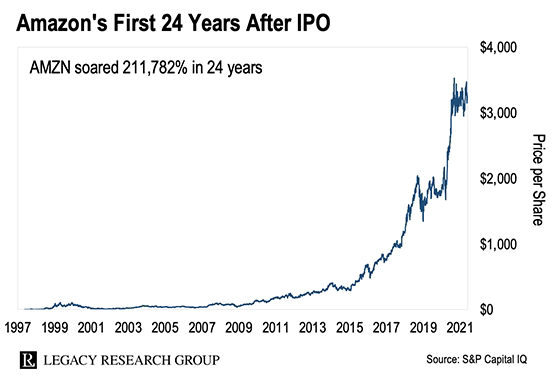The History of Amazon
Amazon, one of the world’s most influential and recognizable companies, has an extraordinary history that spans over two decades. Founded by Jeff Bezos in 1994, Amazon began its journey as an online bookstore, evolving into a global powerhouse that has redefined multiple industries.
The Birth of Amazon
In 1994, Jeff Bezos, a former Wall Street hedge fund executive, saw the potential of the internet. Recognizing the rapid growth of web usage, he compiled a list of 20 products that could be sold online. Books were selected as the starting point due to their universal demand and low cost. Bezos moved to Seattle, a city with a tech-savvy workforce and a large book distribution center, and founded Cadabra, Inc., which was soon renamed Amazon.com after the world’s largest river, symbolizing his vision for a vast and ever-growing business.
Early Days and IPO
Amazon launched its website on July 16, 1995. Initially, Bezos operated out of his garage, with a small team that packaged books and shipped them across the United States and beyond. The company quickly gained traction due to its user-friendly interface, vast selection, and commitment to customer service. By 1997, Amazon had grown exponentially, leading to its initial public offering (IPO) on May 15, 1997. The IPO raised $54 million, which helped Amazon expand its product offerings and infrastructure.
Diversification and Expansion
In the late 1990s, Amazon began to diversify its product range beyond books, adding music, electronics, toys, and more. The company’s strategy was to become “The Everything Store.” By investing in technology and customer data analytics, Amazon tailored its offerings to individual customer preferences, enhancing the shopping experience.
Technological Innovations
Amazon’s focus on technology led to several groundbreaking innovations. In 2002, the company launched Amazon Web Services (AWS), offering cloud computing and storage solutions. AWS has since become a significant revenue driver, dominating the cloud market with services like EC2 (Elastic Compute Cloud) and S3 (Simple Storage Service).
In 2007, Amazon revolutionized the book industry again with the Kindle e-reader, making digital reading mainstream. The introduction of Amazon Prime in 2005, offering unlimited two-day shipping for a subscription fee, further solidified customer loyalty.
Acquisitions and Market Dominance
Amazon’s acquisition strategy played a crucial role in its growth. Notable acquisitions include Zappos (2009), Twitch (2014), Whole Foods Market (2017), and MGM (2021). These acquisitions allowed Amazon to enter new markets and expand its influence across different sectors.
Retail and Logistics Innovations
Amazon has continually pushed the boundaries of retail and logistics. The company’s development of sophisticated algorithms and use of robotics in warehouses improved efficiency and reduced costs. Initiatives like Amazon Fresh and Amazon Go stores have blurred the lines between online and offline retail, showcasing the company’s commitment to innovation.
Challenges and Controversies
Despite its success, Amazon has faced significant challenges and controversies. Criticisms have included labor practices in its fulfillment centers, antitrust issues, and its impact on small businesses. Amazon has addressed some of these concerns by increasing wages, improving working conditions, and engaging in corporate social responsibility initiatives.
Amazon Today and Beyond
Today, Amazon is a trillion-dollar company and a leader in e-commerce, cloud computing, digital streaming, and artificial intelligence. Jeff Bezos stepped down as CEO in 2021, handing over the reins to Andy Jassy, the former head of AWS. Under new leadership, Amazon continues to innovate and expand, exploring areas like space travel with Blue Origin and healthcare with Amazon Care.
Conclusion
Amazon’s journey from a humble online bookstore to a global tech giant is a testament to its relentless focus on customer satisfaction, innovation, and strategic growth. As it continues to shape the future of commerce and technology, Amazon’s history serves as an inspiring example of how vision, adaptability, and technology can drive extraordinary success.







Comments
Post a Comment